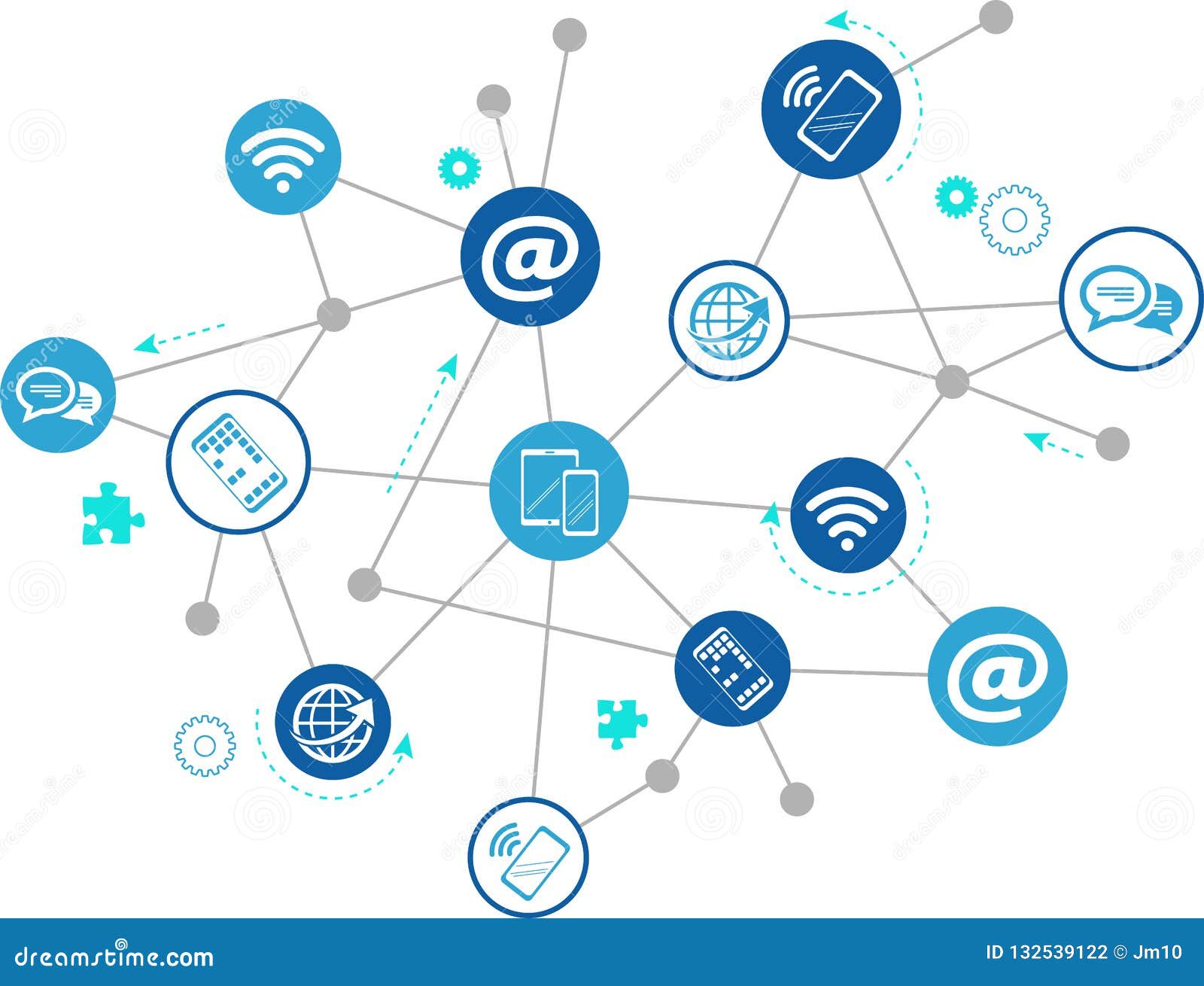Digital Communication
- The concentration in digital communication examines the strategic use of digital technologies for communication professionals. This concentration addresses how to use the Web and social media to reach out to diverse publics and how to incorporate digital with traditional communication campaigns. Courses include effective Web design and strategy, public relations in the digital age, using.
- DCT's are digital tools that allow two or more people to communicate with one another. These can be written, verbal, visual or audible communication. Some examples of these are: Having a text.
- Many regular phone lines are still based on analogue technologies. However, mobile.
- Digital Communications Timeline Timeline created by CartierScarborough123. In Science and Technology. Telegraph The telegraph was invented in 1836.
- Digital Communication Degree
- Digital Communications Rf
- Digital Communications Santivirus
- Digital Communication Tutorial
Course: B.Tech
Digital Communication is the exchange of information electronically. Recently, there has been a huge amount of change and development in digital communication. One of the significant changes within the digital revolution is a person’s ability to communicate with other people. In the 19th century, forms of communication were limited.
- Digital Communication
All time popular Study Materials
Note for Digital Communication - DC by nishita goyal
By Nishita GoyalNote for Digital Communication - DC by Prajakta Wasekar
By Prajakta WasekarNote for Digital Communication - DC by Priyam Jaiswal
By Priyam JaiswalNote for Digital Communication - DC by Ramesh Varma
By Ramesh VarmaNote for Digital Communication - DC by SANYASI RAO ALLANKI
By SANYASI RAO ALLANKI
Note for Digital Communication - DC by Mahadev Mugalihal
By Mahadev. MugalihalNote for Digital Communication - DC by kusum chaudhary
By kusum chaudharyNote for Digital Communication - DC by Dlisha
By DlishaPrevious Year Exam Questions for Digital Communication - DC of 2018 - BPUT by Bput Toppers
By Bput ToppersPrevious Year Exam Questions for Digital Communication - DC of 2016 - GTU by kusum chaudhary
By kusum chaudharyNote for Digital Communication - DC By Rashika Sinha
 By Rashika Sinha
By Rashika SinhaNote for Digital Communication - DC By Madhan Kumar
By madhan kumarPrevious Year Exam Questions of Digital Communication of KIIT - DC by Ruparani Mahapatra
By Ruparani MahapatraPrevious Year Exam Questions of Digital Communication of KIIT - DC by Ruparani Mahapatra
By Ruparani MahapatraPrevious Year Exam Questions of Digital Communication of KIIT - DC by Ruparani Mahapatra
By Ruparani Mahapatra
Previous Year Exam Questions of Digital Communication of KIIT - DC by Ruparani Mahapatra
By Ruparani MahapatraCourse: B.TechGroup: Digital System
Also Known as:Digital Electronics Circuit, Digital Signal Processing, Digital Communication Techniques, Digital Switching and Telecommunication Networks, Principal Of Digital Communication, Digital Logic, Advanced Digital Signal Processing, Digital Design Through Verilog HDL, Digital Logic Design and Computer Organisation, Digital Logic Design,Digital Communication Degree
Digital System Design, Digital Principle and System Design, Digital Circuits and Design, Digital Logic Circuits, Digital Principles and Design, Digital Control System, Digital Forensics, Digital Electronics, Digital Switching and Transmission, Digital VLSI, Digital Communication Technology, Digital Switching Systems, Digital Image And Video Processing, Advanced Digital Design Using Verilog, Digital System Design Using Verilog, Advance VLSI Design, Digital Integrated Circuit Design, Digital Design and Verification, Digital systems and ApplicationsDigital Communications Rf

Digital Communications Santivirus
, Digital Design For Apparel Categories, Digital Electronics and Logic Design, Digital System Testing And Testable Design
Digital Design For Apparel Categories, Digital Electronics and Logic Design, Digital System Testing And Testable DesignDescription:
Digital Communication - Digital Communication, DC Study Materials
Similar Links:August 12, 2020
While creating a digital communications strategy in an ever-changing technological world may seem daunting, it doesn’t have to be. The first step is acknowledging that you need one and if you are reading this, you are already there. Congrats!
Digital Communication Tutorial
Now, let’s take it to the next level by addressing the four key steps to building a well thought out digital communications strategy.
1. Identify your business goals.
The start of a digital communications strategy begins by determining what you want to achieve for your business. Some example business goals you might consider are:
- Increasing lead volume
- Improving shareholder value
- Increasing sales or requests for a quote
2. Gain insight into your target audience(s).
Once you are comfortable with your business goal, determine who you want to reach. Align your target audience with what you hope to accomplish by asking a few key questions:
- Do they use mobile devices or desktop more often?
- What types of content do they find valuable and engaging?
- Are they already aware of your company and its offerings?
3. Determine the best suited digital tactics.
Now that you have your target audience, and you know what action you want them to take, it’s time to determine where to best place your content. While investing in a mix of tactics is recommended, other tactics to consider include:
- Paid:
- Paid Search: helps to drive traffic to your site from search engines and ensures that this traffic is relevant.
- Paid Social Media: increases your brand’s reach and awareness to targeted audiences.
Discover how your paid advertising stacks up against competitors here.
- Owned:
- Organic Social Media: improves your online presence and reputation.
- Search Engine Optimization (SEO) and Content Creation: not only increases your website’s position on sites such as Google, Yahoo and Bing, but it improves the user experience usability of your site.
- Email Marketing: builds relationships with prospects, leads, current customers and even past customers.
4.Measurement & Analytics
The final step in any great strategy is putting KPIs in place before you implement your tactics. When reviewing KPIs for a digital strategy, be sure to distinguish between vanity and value metrics. Vanity metrics are useful when measuring the success of a marketing activity, but ultimately do not provide data on the ideal end result. Value metrics apply to the ultimate business goal, not just surface level web analytics data. Examples of both include:
- Vanity
- Website traffic
- Time on site
- Keyword rankings
- Bounce rate
- Social media followers
- Impressions
- Page views
- Value
- eBook downloads
- Conversion rates
- Sales-qualified leads
- Customer acquisition costs
- Customer lifetime value
Once you’ve collected this information, it’s time to develop your digital communications strategy.
Use your goals, audience, tactics and KPIs to customize your strategy. For example, let’s say you run a marketing and communications group for a manufacturing organization. How would you use the 4-step process to determine the best digital strategy?
- First, you confirm that your business goal is to win new customers by creating awareness of your innovative new products, services and superior delivery.
- Your business is launching a new, innovative product, but isn’t currently viewed as “innovative” due to old school communication tactics.
- Your target audience (buyers) are entry-level and early-career engineers. They prefer to search for information online primarily using search engines, manufacturer websites, forums, associations and trade media websites. They largely desire technical information and case studies.
- From there, you conclude that your digital communications strategy should build audience awareness and engagement around the new product by using online tactics to communicate to your target audience and ultimately drive leads and sales. What exactly does this mean? You identify several digital tactics that could bring the strategy to life:
- Content Creation: You create an online resource center of product information that educates audiences and helps them solve their business challenges. Content on the resource center includes:
- Educational videos
- Research papers with technical data and specifications
- Case studies that appeal to specific use-cases
- SEO: In order to help prospects find the resource center and information they need, you invest time and resources into optimizing the site and content so it’s indexed in search for high priority keywords and queries.
- Paid & owned tactics: You promote your content online through appropriate channels such as paid search, SEO, association websites, and organic and paid posts on LinkedIn.
- Measurement & Analytics: You set up a monthly reporting cadence to review performance across channels and optimize your campaign based on the results. These metrics include request a quote form fills, clicks to site from social media and search, resource center visits and page views and target keyword rankings in organic and paid search.
- Content Creation: You create an online resource center of product information that educates audiences and helps them solve their business challenges. Content on the resource center includes:
As you work to develop your digital communications strategy, keep your business goals in mind, concentrate on your target audience, determine your tactics and measure KPIs throughout the campaign. Stay focused on these tenets to ensure your strategy is on target and will deliver the results you’re seeking. Want to discuss your digital strategy? Drop me a line.
